The Dinosaur Bone Collection
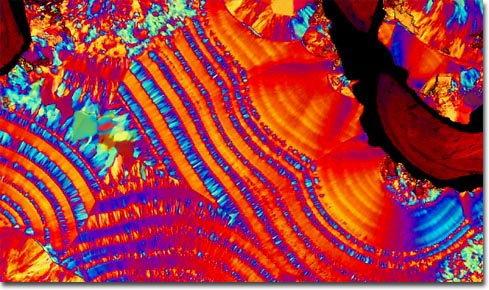
Quartz-Filler Dinosaur Bone
The Dinosaur Bone Collection
|
Since their discovery over 150 years ago, dinosaurs have been a source of intrigue and fascination for young and old alike. The first dinosaur bones were discovered in Western Europe during the 1820s, but today their fossils are found on all of the continents and several hundred distinct types of dinosaurs have now been classified. Dinosaurs are a group of extinct reptiles that first appeared about 225 million years ago and became extinct about 66 million years ago. The reptilian nature of dinosaurs is evidenced by their skeletal features and the fact that they reproduced by laying hard-shelled eggs. 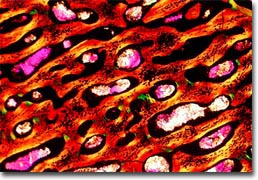
Phosphatic Collophane The skeletal features of many dinosaurs are remarkably similar to those of modern birds, which has led to speculation that dinosaurs are ancient ancestors of birds. The term "dinosaur" was coined in 1842 by British comparative anatomist Richard Owen, from the Greek words deinos meaning "terrible" and sauros meaning "lizard" or "reptile". Because dinosaurs are now extinct, we must examine and study their fossils to understand the history of this fascinating group of animals. Dinosaur fossils were formed over a period of millions of years in the environment that dinosaurs lived and died. Fossils are usually found amid rock formations located in areas that often yield clues to the climate and habitats in which dinosaurs lived. 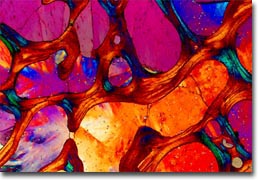
Crystals within Haversian Canals The term fossil refers to any preserved remains or imprint of a living organism (usually ancient), such as a bone, shell, footprint, or leaf impression. Most of the dinosaur fossils found today are mineralized bones, but they also include footprints, tracks, eggs, skin impressions, stomach stones (known as gastroliths), and fossilized feces (known as coprolites). Fossilization usually occurred when a dinosaur died and was buried or covered over by a sediment of rock particles. We don't believe that dinosaurs had formal burial rituals, so most dinosaur remains were probably scavenged by other dinosaurs before becoming weathered and slowly covered by sediment. The soft tissues that were not eaten (skin, eyes, muscles, and internal organs) rotted away quickly leaving only the bones and teeth to become fossilized. 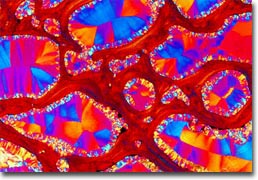
Mineral-Filled Canals Bones and teeth of the dinosaurs must undergo some form of mineralization to become fossils. The organic matter comprising the bones and teeth usually decays and is replaced by minerals such as silica, calcite, carbonates and iron. Sometimes the bone and teeth organic matter forms complex inorganic compounds with these minerals. Mineral replacement and complex formation occurs on a microscopic scale where the tiny spaces and voids comprising the organic bone matrix become filled with new minerals. It is widely believed that fossilization takes well over 10,000 years because most younger bones show little or no mineralization. The actual rate at which mineralization of bone occurs is dependent upon the type and chemistry of the surrounding sedimentary environment in which the bone is buried. 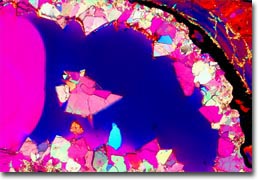
Dolomite and Calcite Crystallites The fossils in the Molecular Expressions Dinosaur Bone Collection were collected by fossil hunters worldwide. Scientists who collect and study fossils professionally are called paleontologists from the Greek words for "ancient-life studies". To prepare dinosaur fossils for examination under the microscope, they are first chipped into pieces about 1-2 inches in diameter. Next, the chips are sawn to about the thickness of a quarter and ground flat on one wide with a rotary lathe. The flat surface is thoroughly polished using increasingly finer sandpaper or loose oxide crystals before being glued onto a coarse glass slide using epoxy resin. After several days, when the epoxy has had sufficient time to harden, the other side of the chip is ground and polished with diamond dust until a thickness is achieved (about 30-80 microns) where light will shine through the chip. 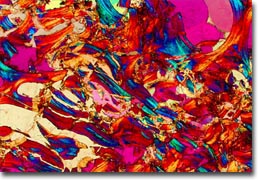
Crushed Haversian Canals Under polarized light, thin sections of dinosaur bones exhibit striking colors and patterns as evidenced by the photomicrographs in this collection. The header image for this collection (Quartz-Filled Dinosaur Bone) illustrates the beautiful mineral patterns that occur when the cavities inside dinosaur bones are filled. The matrix of Haversian canals in these photomicrographs arise from bone channels (once round) that are crushed flat by the huge pressures of being underground for such a long time. Calcite and Dolomite minerals are often found in the voids between Haversian canals where they form beautiful displays of pattern and color. Rings of collophane surrounding the Haversian canals are often filled with light impervious metallic oxides. The majority of our Dinosaur Bone Collection was prepared by Sinforoso Resultay, a petrographic technician and thin section specialist in the Department of Geology and Geophysics at the University of Calgary in Canada. We are constantly in search of new candidates for this collection, so please contact us if you have samples that would be suitable for photomicrography. |
© 1995-2025 by Michael W. Davidson and The Florida State University. All Rights Reserved. No images, graphics, software, scripts, or applets may be reproduced or used in any manner without permission from the copyright holders. Use of this website means you agree to all of the Legal Terms and Conditions set forth by the owners.
This website is maintained by our
|